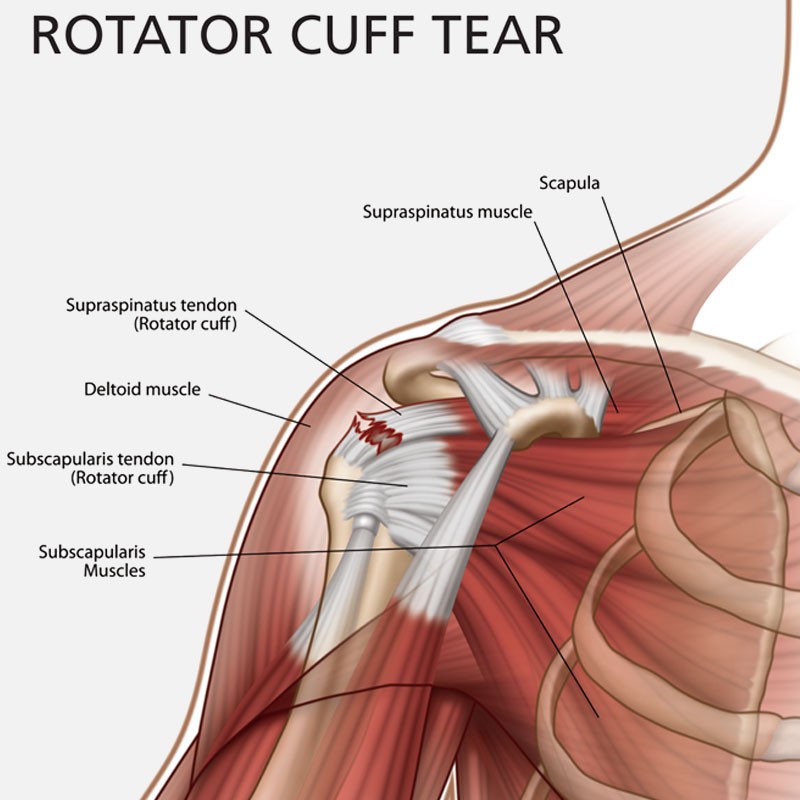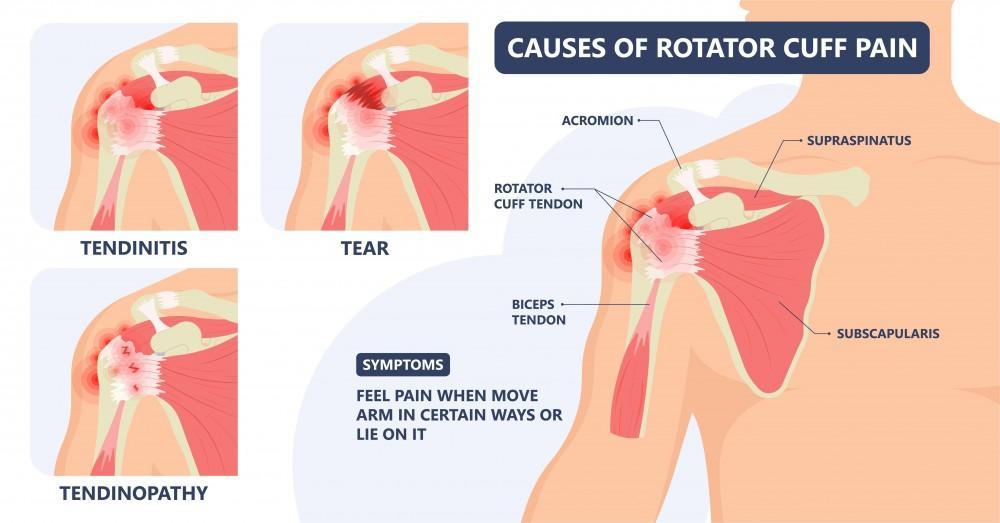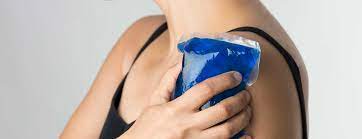Dealing with a shoulder rotator cuff injury can be challenging, but with the expert care and guidance from SimplyAlign Rehabilitation Center in Scarborough and Woodbridge, Canada, you’re in capable hands. In this article, we’ll explore what a rotator cuff injury is, its symptoms, causes, and the personalized physiotherapy techniques used at SimplyAlign to help you recover and regain full shoulder function.
What is Rotator Cuff Injury?

A rotator cuff injury is when the muscles and tendons in your shoulder get hurt. These muscles and tendons help you move your arm and do things like reaching or lifting. When they’re injured, you might feel pain in your shoulder and have trouble moving your arm like you used to.
This injury can happen because of doing the same movement over and over, like playing sports or painting. It can also happen if you fall or hurt your shoulder suddenly. Sometimes, as you get older, your shoulder can get weaker, and this can make it easier to get hurt.
If you think you have a rotator cuff injury, it’s important to see a doctor. They will check your shoulder and might use special pictures like X-rays or scans to see what’s going on. Treatment can include exercises and therapy to help your shoulder heal and become strong again.
What is the rotator cuff and its role: Imagine your shoulder as a complex puzzle, held together by a team of muscles and tendons known as the rotator cuff. This team made up of the supraspinatus, infraspinatus, teres minor, and subscapularis muscles, allows you to lift, rotate, and move your arm in various directions.
What are the various types of Rotator cuff tears?

1. Partial tears: Just like a tear in a piece of paper, sometimes only a part of the rotator cuff gets hurt, but the rest remains intact.
2. Full-thickness tears: In more serious cases, the entire tendon is torn, leading to a significant loss of function.
3. Acute vs. chronic tears: Tears can happen suddenly due to a strong impact or develop over time due to wear and tear.
What are the common causes of rotator cuff injuries?
1. Repetitive overhead motions: If your daily activities involve lifting your arm overhead, like playing sports or painting, your rotator cuff may experience strain.
2. Trauma or sudden impact: Falls or accidents that impact the shoulder area can lead to immediate tears.

3. Age-related degeneration: As you age, the tendons may weaken, making them susceptible to tears.
4. Poor posture and muscle imbalances: Weak muscles and improper posture can strain the rotator cuff over time.
What are the various symptoms of Shoulder rotator cuff tears?
Shoulder pain and discomfort:If you’re experiencing persistent shoulder pain, whether it’s a dull ache or sharp twinges, it could be a sign of a rotator cuff injury.
Weakness and trouble moving:Difficulty lifting objects or reaching behind your back due to weakened muscles is a common symptom.
Difficulty with daily tasks:Simple activities like lifting, reaching, or putting on clothes may become challenging.
Nighttime pain and sleep problems: Nighttime discomfort can disrupt your sleep, leading to daytime fatigue.
Pain down your arm:Pain that travels down your arm might indicate involvement of nerves around the shoulder.
How are Shoulder Rotator Injuries Diagnosed??

Shoulder rotator cuff injuries are diagnosed through a combination of physical examination, clinical tests, and sometimes imaging techniques. Here’s a simple explanation of the diagnosis process:
1. Physical Examination: A doctor or physiotherapist will carefully look at and feel your shoulder to understand where it hurts and how it moves. They might ask you to do certain movements to see which ones are painful or difficult.
2. Clinical Tests: They may ask you to do specific actions, like lifting your arm or resisting pressure, to check the strength and stability of your shoulder muscles. These tests help them understand which part of the rotator cuff might be injured.
3. Imaging Techniques: In some cases, the doctor might want to see inside your shoulder using special pictures. This can include:
– X-rays: These show the bones in your shoulder and can help rule out other issues.
– Ultrasound: This uses sound waves to create images of your shoulder’s soft tissues, like muscles and tendons.
– MRI (Magnetic Resonance Imaging): This is a detailed picture of your shoulder’s structures using a strong magnetic field and radio waves. It can show if there’s a tear in your rotator cuff and how big it is.
By combining these steps, the healthcare professional can get a clear picture of what’s happening in your shoulder and determine if you have a rotator cuff injury. Remember, it’s important to get a proper diagnosis and treatment to help your shoulder heal and recover.
Why seeing a professional is important:
Seeking help from professionals at SimplyAlign Rehabilitation Center is crucial for accurate diagnosis and proper treatment planning.
How they check your shoulder:
The experts at SimplyAlign will assess your shoulder’s movement, strength, and stability through gentle exercises and movements.
Using special pictures to see inside:
They may use advanced imaging techniques like MRI, ultrasound, or X-rays to visualize the extent of the injury and determine the best approach for your recovery.
Physiotherapy Approach to Recovery

Personalized treatment plans: At SimplyAlign, your recovery plan will be customized to your unique needs, ensuring the best possible outcome.
Reducing pain and swelling: Initially, the focus will be on reducing pain and swelling through techniques like ice and specialized equipment.
Moving your shoulder gently: Gradually, you’ll learn gentle movements to help your shoulder regain its natural range of motion.
Strengthening your shoulder muscles: Progressive exercises will strengthen the muscles, aiding in a complete recovery.
Balance and control exercises: Enhancing your balance and control ensures your shoulder stays stable and prevents re-injury.
Special treatments: At Simply Align we offer advance modalities such as Radio Frequency Tecar therapy, shockwave, laser and Super Induction therapy.
Hands-on help: Our Expert therapists will use hands-on techniques to improve flexibility and reduce tightness in your muscles.
Progressive Rehabilitation with SimplyAlign Rehab – Scarborough & Woodbridge Clinic
- Getting stronger slowly: As you progress, exercises will become more challenging to continue building strength.
- Learning the right way to move: Proper movement techniques will be emphasized to prevent future injuries.
- Practicing daily activities: Simulating everyday tasks in your exercises ensures a smooth transition back to normal activities.
- Core and shoulder stability: Strengthening your core and shoulder muscles provides essential support to your shoulder.
- Adding weights and bands: Introducing weights and resistance bands gradually boosts your shoulder’s strength.
Pain Management and Avoiding Re-injury
- Taking care of yourself: At home, you’ll learn self-care techniques like rest, ice, and avoiding activities that strain your shoulder.
- Watching your posture: Proper posture is essential to prevent additional stress on your shoulder.
- Dealing with pain: Simple pain relief strategies, like over-the-counter medicine and gentle stretches, can be incredibly helpful.
- Long-term care: Experts at SimplyAlign will guide you in making lasting lifestyle changes to keep your shoulder healthy.
Monitoring Progress and Adjusting Treatment
- Keeping track of how you’re doing: Regular check-ups with SimplyAlign’s professionals will ensure your progress is on the right track.
- Changing the plan if needed: If necessary, your treatment plan will be adjusted to ensure the best possible outcome.
What are the Surgical Options and Post-surgery Physiotherapy?
When is surgery is needed?
In some cases, surgery might be recommended, and post-surgery recovery will involve specialized exercises under the guidance of SimplyAlign’s experts.
Healing after surgery
Physiotherapy after surgery is designed to help your shoulder heal properly and regain strength.
Taking it step by step – Post-surgery recovery is a gradual process, with exercises tailored to your individual needs and progress.
Facing a rotator cuff injury may be tough, but the dedicated team at SimplyAlign Rehabilitation Center in Scarborough and Woodbridge, Canada, is here to guide you every step of the way. With their expert care and personalized physiotherapy techniques, you’ll be on the road to a stronger, healthier shoulder and a better quality of life.
